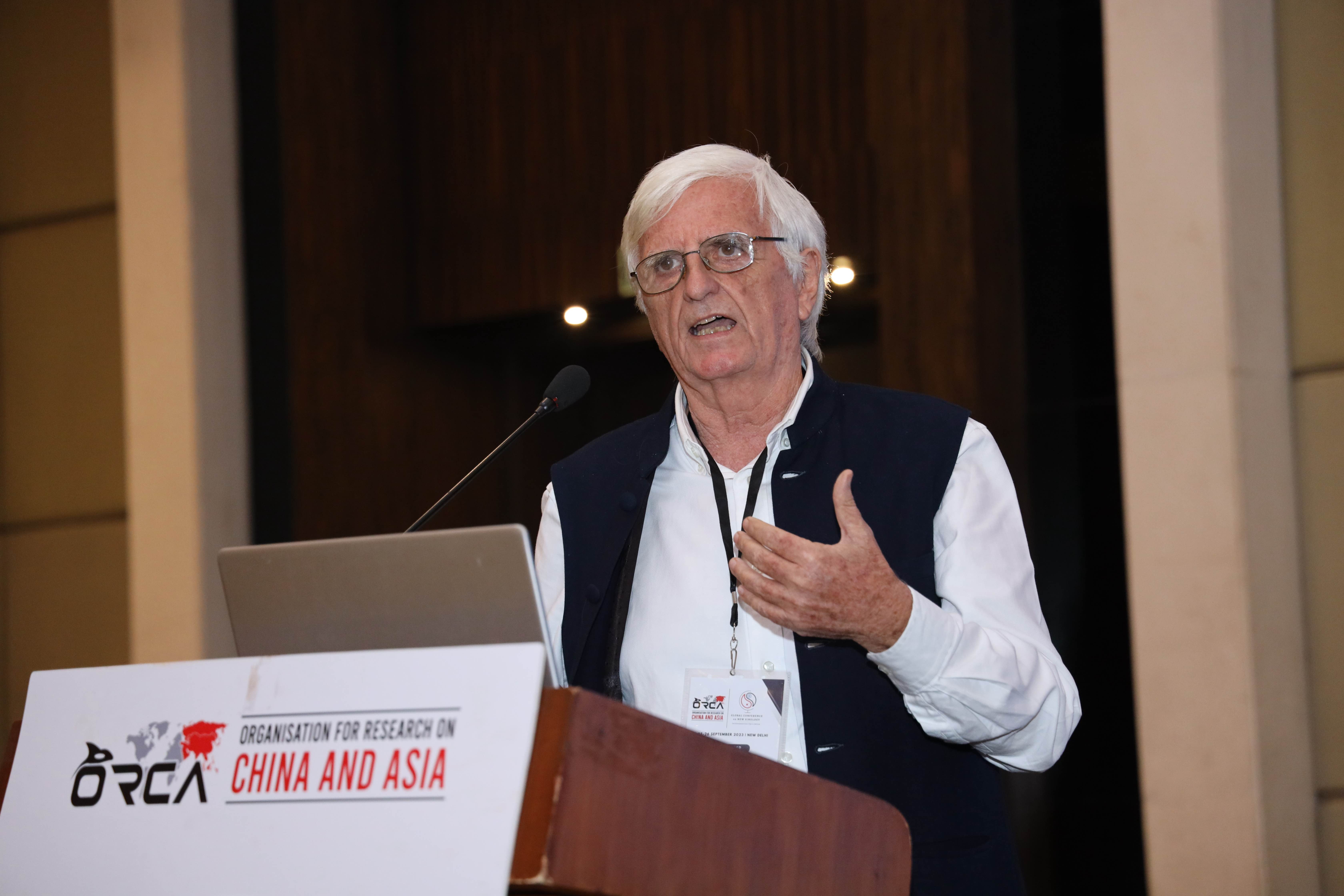“The religions and societies of Tibet and India have developed in different lines but Tibet is still a child of Indian civilization.”
-The 14th Dalai Lama
In recent years, the People’s Republic of China (PRC) has been rewriting the history of the Tibetan plateau in order to demonstrate that the Tibetan culture and civilization originated from the Mainland and not India. To give an example, Beijing speaks of ‘The Chinese Great Tibetan Sutra’ as if Buddhism had taken birth in China. The contacts between Northern India and the Tibetan plateau have been far older; they date several thousands of years, from the time of the ancient Zhangzhung kingdom, which has unfortunately not attracted enough attention from the Indian historians and archeologists.
The first Buddhist monastery in Tibet was built in 779 A.D. in Samye by Shankarashita, the abbot of Nalanda, with the help of Guru Padmasambhava, a tantric practitioner from Swat. Interestingly, soon after, a dispute arose between the Indian and Chinese schools of Buddhism. After two years (792-794) of intense discussions in Samye, the Indian path (originated in Nalanda) prevailed. A proclamation was issued stating that Indian Way was thereafter the State Religion; it remained so till 1959. The Dalai Lama often likes to say that the plateau acted as deep freezer for the Indian Knowledge System, particularly the Nalanda Tradition. This is absolutely true.
Tibet lost its Independence
The end of the 1940s witnessed momentous events which redesigned Asia. In August 1947, India got her Independence from the British, while in October 1949, the sleeping Dragon, Communist China rose with its Great Helmsman announcing the creation of the PRC from the rostrum on Tiananmen Square. Soon after, Tibet, one of the few Independent Asian nations, lost its freedom. Mao Zedong was quick to move: by the end of December 1949, he had annexed Eastern Turkestan (today Xinjiang) and reached the gates of India. Tibet was invaded a few months later.
In the process, the Dalai Lama lost his country and India, a peaceful frontier; the centuries-old buffer between the subcontinent’s Northern plains and the Middle Kingdom disappeared. During the years following the invasion of the Roof of the World, the situation continued to deteriorate, with Communist China tightening its grip on the administration, trade and religion. The downward slide could not be stopped; the Tibetans became mere pawns in a greater ‘Game’.
This situation culminated in the events of March 1959, which saw an uprising of the Tibetan population in Lhasa and the flight of the Dalai Lama who took refuge in India. These years were marked by the slow breakdown of the age-old Indo-Tibet relations, being replaced by a cruder relation with the new occupiers. Since 1962, India has hardly had any contact with Tibet.
The Seventh Tibet Work Forum
A Tibet Work Forum (TWF) usually decides the fate of the Roof of the World for the next 5 to 10 years. It is of concern to India as it also defines China’s western border policies. TWFs were held in Beijing in 1980, 1984, 1994, 2001, 2010 and 2015. It is a conference attended by hundreds of officials, including the entire Politburo, the People’s Liberation Army officials, representatives from different ministries, as well as local satraps. The 6th Tibet Work Forum was presided over by President Xi Jinping, who pleaded for more efforts to promote economic growth and bring about inclusive social progress in Tibet and Tibetan-inhabited areas. Xi mentioned his well-known theory about the ‘border areas’: "Governing border areas is the key to governing a country, and stabilizing Tibet.”
The Seventh TWF was held in Beijing on August 28 and 29, 2020. For the first time, it was given large publicity; it came at a time when Beijing was celebrating the 55th anniversary of the creation of the Tibetan Autonomous Region (TAR), which has never really been autonomous.
A Sinicized Tibet
But looking at the TV coverage of the event, one is struck by a few images. First, no monk attended the Forum. For a society which has traditionally been based on “the Harmonious Blend of Religion and Politics,” it was strange that even Gyaltsen Norbu, the Chinese-selected Panchen Lama, was nowhere to be seen. It is not only the lamas who were missing in action, but hardly any Tibetans were present; although all the speeches (and the TWF itself) were about the welfare of the ‘masses of all ethnic groups’ in Tibet. In his speech, Xi Jinping emphasized The Ten Musts to “fully implement the Party's strategy of governing Tibet in the New Era”.
Xi pointed out: “Practice has fully proved that the Party Central Committee’s policies on Tibet work are completely correct, and that Tibet’s sustained, stable and rapid development is an important contribution to the overall work of the party and the country.” Xi further explained: “To do a good job in Tibet, we must adhere to the leadership of the Communist Party of China, the socialist system with Chinese characteristics, and the system of regional ethnic autonomy.” Buddhism has an important place in the scheme, this is why the Communist Party was asked to “actively guide Tibetan Buddhism to adapt to the socialist society and promote the Sinicization of Tibetan Buddhism”. In this scheme, the succession of the Dalai Lama is of prime importance for Beijing. More recently, in The Global Times on February 22, 2023, China asserted that “Recognition of new Dalai Lama must be conducted in China”. The mouthpiece of the Communist Party continued, “In 1995, the 11th Panchen Lama was conferred with his title by the central government [Beijing] through this strict religious ritual.” It omits to say that the boy recognized as the Panchen Lama by the Dalai Lama was arrested and more than 25 years later, is still in custody of the Chinese government somewhere in China. Does Beijing believe that the world has forgotten?
Citing the ‘Measures on the Management of the Reincarnation of Living Buddhas of Tibetan Buddhism’ announced in 2007 by Beijing, the article asserted: “It stipulated that the reincarnation of Living Buddhas should not be interfered with or manipulated by any external forces.” According to Beijing, the Dalai Lama has no say in his own succession.
In conclusion, there is no doubt that one of the objectives of the sinicization of Tibetan Buddhism is to forever remove Indian influence on the plateau.
These remarks were presented by Mr. Claude Arpi at Global Conference for New Sinology (GCNS), 2023



Author
Claude Arpi
Claude Arpi is an Overseas Citizen of India (OCI) born in 1949 in Angoulême, France. He settled in India 49 years ago. He is a Distinguished Fellow, Centre of Excellence for Himalayan Studies, Shiv Nadar Institution of Eminence (Delhi). Claude Arpi earlier held the Field Marshal KM Cariappa Chair of Excellence from the United Service Institution of India (USI) for his research on the Indian Presence in Tibet 1947-1962 (in 4 volumes – Vij Publisher). He is the author of many books on Tibet, China, India and the Indo-French relations. He also contributed to the ORCAxISDP Special Issue "The Dalai Lama's Succession: Strategic Realities of the Tibet Question."